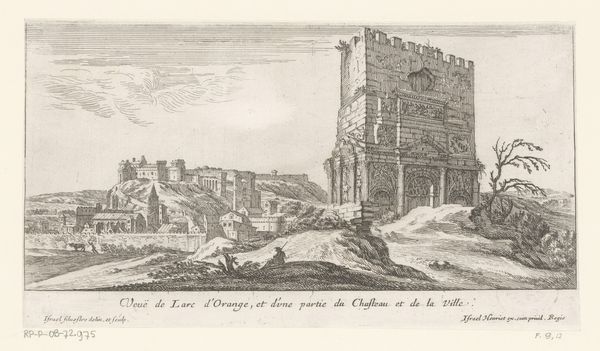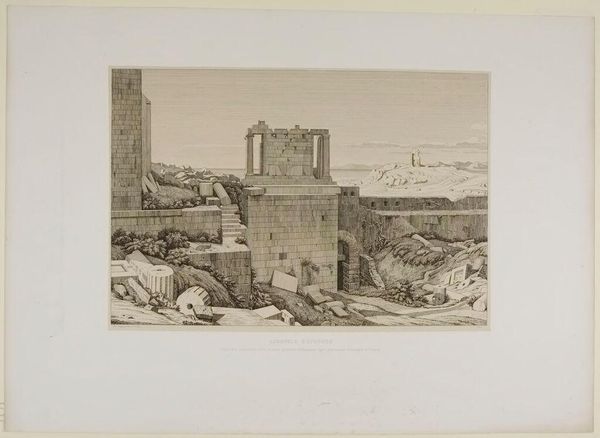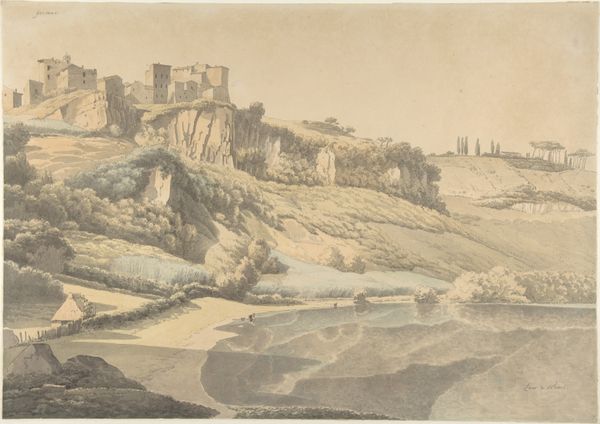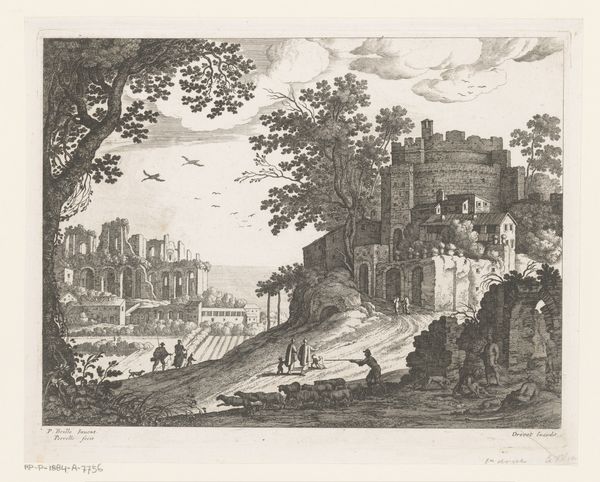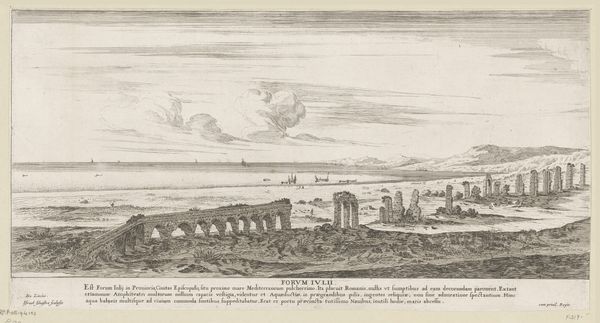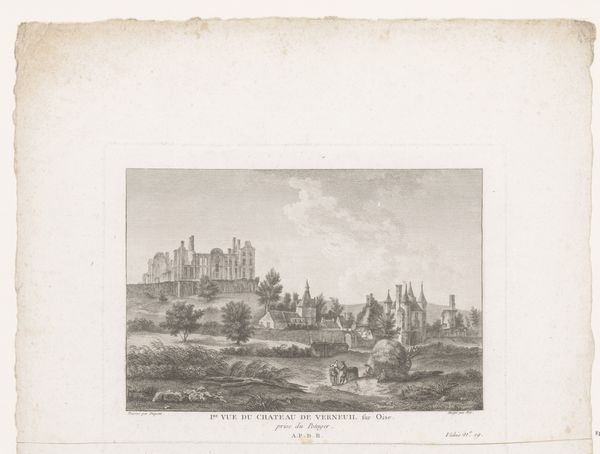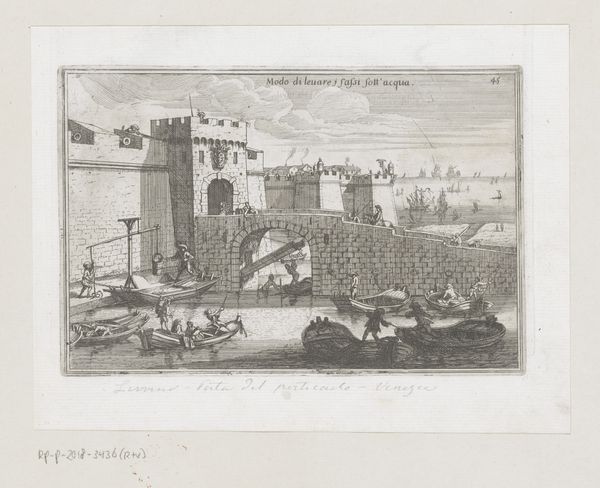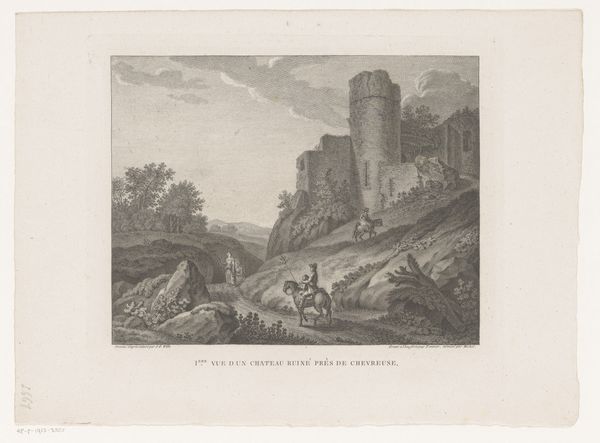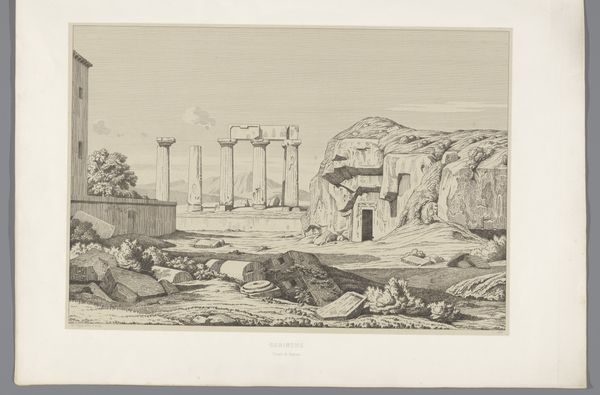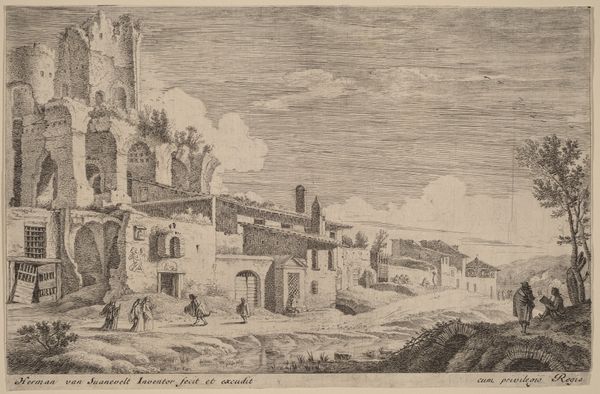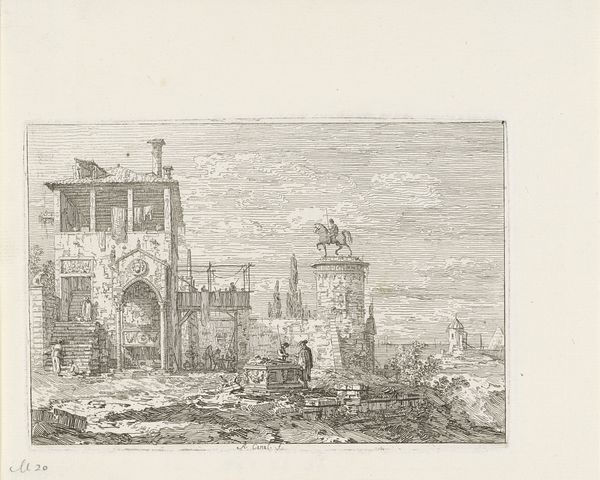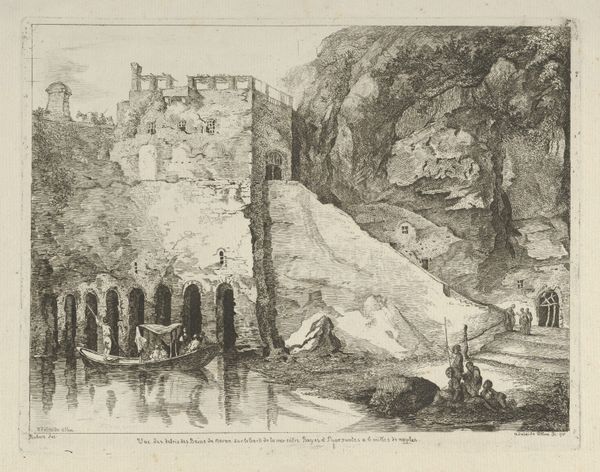
print, engraving
#
neoclacissism
# print
#
greek-and-roman-art
#
landscape
#
history-painting
#
engraving
Dimensions: height 437 mm, width 595 mm
Copyright: Rijks Museum: Open Domain
This print of the Acropolis in Athens was made by Claude-Félix-Théodore Caruelle d'Aligny in the 19th century. It is an etching, created by incising lines into a metal plate, applying ink, and then pressing it onto paper to transfer the image. The linear quality of the printmaking technique lends itself to a sense of architectural precision, with the blocks of stone rendered in astonishing detail. But the ruins themselves testify to the ravages of time, and the sheer amount of labor that went into the original construction. The Acropolis was built to honor the goddess Athena, but also as a symbol of Athenian power and prosperity. Prints like these, which could be widely distributed, fueled a fascination with classical antiquity in the 19th century, and a corresponding aspiration to the same heights of cultural achievement. Yet, the very act of printing also implies a kind of democratizing impulse, making cultural treasures accessible to a wider audience. It's a complex relationship.
Comments
No comments
Be the first to comment and join the conversation on the ultimate creative platform.
